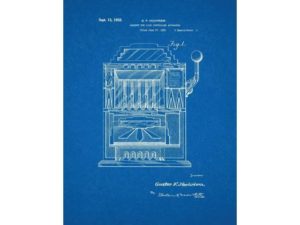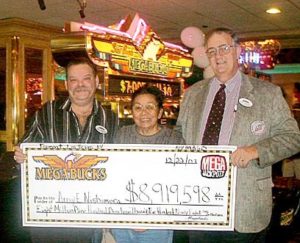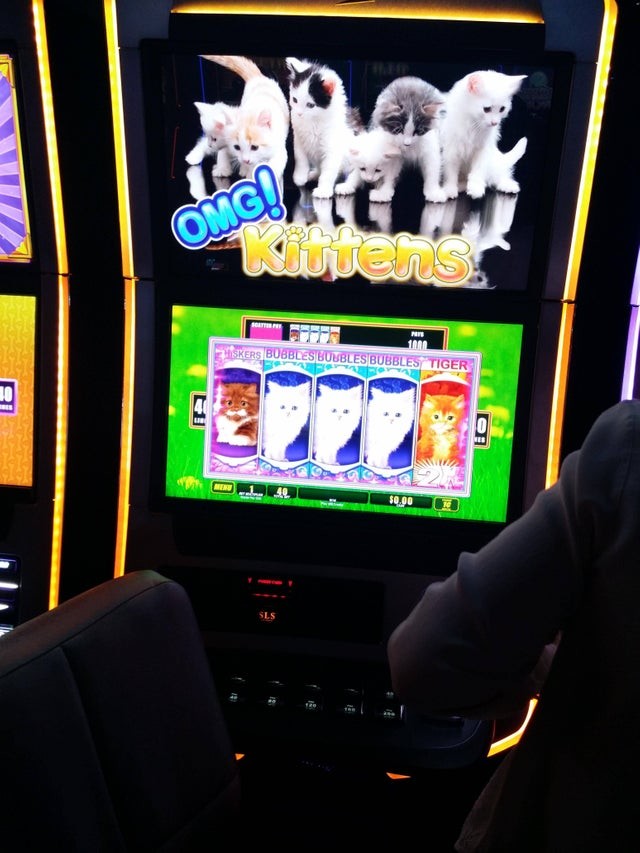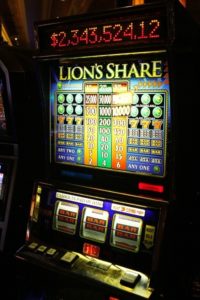 The first thing to understand about modern slot machines, regardless of whether they are the electro-mechanical type, with physical reels, or the video type, with virtual reels, is that the outcome of each spin depends on random number generator (RNG). An RNG consists of highly complex computer instructions, technically known as an ‘algorithm’. By definition, it cannot reproduce randomness exactly, but does a highly passable imitation. Consequently, the outcome of each spin is, effectively, random and independent of anything that comes before, or after, in a series of spins.
The first thing to understand about modern slot machines, regardless of whether they are the electro-mechanical type, with physical reels, or the video type, with virtual reels, is that the outcome of each spin depends on random number generator (RNG). An RNG consists of highly complex computer instructions, technically known as an ‘algorithm’. By definition, it cannot reproduce randomness exactly, but does a highly passable imitation. Consequently, the outcome of each spin is, effectively, random and independent of anything that comes before, or after, in a series of spins.
The advent of virtual, rather than physical, reels means that the need for mapping symbols and spaces on the physical reels to virtual reels no longer exists. Of course, a virtual reel is not a physical entity, so a reel with 64, 128 or 256 symbols takes up no more physical space than a reel with, say, 32 symbols. Consequently, programmers can simply program virtual reels with a sufficient symbols and spaces to dramatically increase the number of possible outcomes – and, hence, the value of jackpot prizes – without worrying about the physical constraints of a slot machine cabinet.
Nevertheless, when a player pushes the button to set the reels in motion, the RNG instantaneously generates a random number corresponding to a ‘stop’ position on each reel. Unsurprisingly, each reel stops at the position dictated by the RNG and the resulting symbols indicate to the player whether it was a winning or losing spin. However, as far as the ‘real’ game is concerned, the visible reels are something of an irrelevancy; spinning reels may create a sense of anticipation and excitement but, otherwise, exist only to inform the player of the outcome of a spin. By the time the reels are spinning, the RNG has already done its work and the outcome of the spin is already determined; what happens on the video screen thereafter has no effect, whatsoever, on the game.


 Late on the morning of Monday, December 22, 2003, less than 24 hours into her annual holiday to Las Vegas from her home in Kaunakakai on the Hawaiian island of Molokai, Amy Nishimura held aloft a cheque for $8.92 million dollars, having hit the jackpot on the ‘Megabucks’ slot machine at the Fremont Hotel.
Late on the morning of Monday, December 22, 2003, less than 24 hours into her annual holiday to Las Vegas from her home in Kaunakakai on the Hawaiian island of Molokai, Amy Nishimura held aloft a cheque for $8.92 million dollars, having hit the jackpot on the ‘Megabucks’ slot machine at the Fremont Hotel.
 Despite being an archaic, mechanical, three-reel slot machine dating from the Nineties, prior to August, 2014, the aptly-named ‘Lion’s Share’ was the most famous and popular attraction at the MGM Grand on the Las Vegas Strip. In fact, so famous was it that it featured in a piece in the ‘Wall Street Journal’, which boosted its popularity still further.
Despite being an archaic, mechanical, three-reel slot machine dating from the Nineties, prior to August, 2014, the aptly-named ‘Lion’s Share’ was the most famous and popular attraction at the MGM Grand on the Las Vegas Strip. In fact, so famous was it that it featured in a piece in the ‘Wall Street Journal’, which boosted its popularity still further.